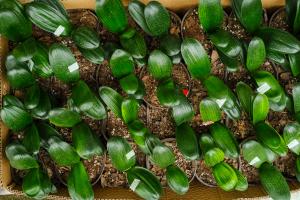Introduction
Water lilies are exotic and captivating plants that can add a touch of nature to any water feature, pond or garden. These plants are not only aesthetically pleasing, but they also aid in maintaining a balanced ecosystem in water bodies. This article explains how to plant water lilies in your pond or water feature.
Selection of Water Lilies
The first step in planting water lilies is selecting the right species of water lily for your pond. There are tropical and hardy water lilies, and they come in different colors, sizes, and shapes. Tropical water lilies require warm water, while hardy water lilies can tolerate colder temperatures. It is, therefore, essential to understand the climatic conditions of your area, including temperature and light exposure, to select the most suitable water lily species. There is a variety of colors to choose from, including shades of white, pink, yellow, red or even blue.
Preparing the Pond
Before planting the water lilies, it is vital to prepare the pond. First, the pond should have clear and clean water, with stable pH and nutrient levels. You can achieve this through regular maintenance and using appropriate water treatments. The pond should also have appropriate water depth, which varies depending on the water lily species. Ideally, most water lilies require a water depth of 18 to 36 inches, while tropical water lilies require a depth of 18 to 24 inches. Additionally, it is essential to provide adequate light for the water lilies, which can be achieved through a sunny location or installing artificial lighting for indoor ponds.
Planting Process
Once the pond is prepared, the planting process can begin. Start by selecting a planting container or pot, which should be at least 18 inches in diameter and have several drainage holes at the bottom. Fill the pot with potting soil, leaving enough room for the water lily's rhizome. The rhizome should be placed horizontally on the soil, and the roots should be spread out evenly. Cover the rhizome and roots with more soil, leaving the crown of the plant exposed. Water the soil lightly to settle it around the roots, and add a layer of decorative stones or gravel to the soil surface.
Planting Time and Maintenance
The best time to plant water lilies is during spring or early summer, when the water is warm enough to promote growth. During the planting process, it is essential to avoid damaging the delicate roots, rhizome, or crown of the plant. Once planted, the water lily will take some time to establish, but with proper care and maintenance, it will thrive. Water lilies require regular fertilization, which can be achieved through placing appropriate fertilization tablets beneath the soil surface. Deadheading of spent blooms will promote further flowering. It is also essential to remove any decaying plant matter promptly, through the use of appropriate pond skimmers, to prevent water contamination and algae blooms
Conclusion
Planting a water lily in your pond or water feature can add beauty and interest to your outdoor or indoor space. With the right species selection, preparation, planting process and maintenance, you can enjoy the benefits of these exotic plants for years to come.

 how many times do yo...
how many times do yo... how many planted tre...
how many planted tre... how many pine trees ...
how many pine trees ... how many pecan trees...
how many pecan trees... how many plants comp...
how many plants comp... how many plants can ...
how many plants can ... how many plants and ...
how many plants and ... how many pepper plan...
how many pepper plan...






























